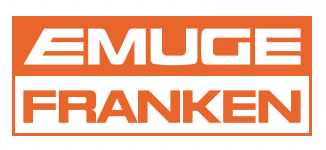This 30-minute webinar offers our readers an opportunity to take a deeper dive into the "Thread Without Dread" article published in the January 2023 issue of Cutting Tool Engineering. The article, which features insight from EMUGE-FRANKEN USA and Tapmatic Corp., maps out strategies for meeting the special challenges of putting screw threads in titanium. The article provides practical hands-on tips and best practices for improving your tapping operations—specifically when threading titanium—such as using tapholders designed to provide a minor amount of positional compensation during rigid tapping. This, according to both companies, results in much better thread quality and significantly longer tap life. Also, you will learn why the right tap design is critical for success, and why, in some cases, thread mills are a preferable alternative to taps.
CTE Publisher Dennis Spaeth, who moderated the webinar, was joined by the contributors to the feature article: Mark Hatch with EMUGE-FRANKEN USA and Joe Gillilan with the Tapmatic Corp. As presenters, they each take turns delving a bit deeper into the challenges presented when tapping in titanium, then field a number of questions from the audience.
Speaker contact information:
- Mark Hatch
Product Director
EMUGE-FRANKEN USA
[email protected]
508-595-3620
- Joe Gillilan
Applications Engineer
Tapmatic Corp.
[email protected]
208-773-8048
- Dennis Spaeth
Publisher
Cutting Tool Engineering
[email protected]
847-714-0176
Handouts available during the webinar are included below:
Contact Details
Contact Details
Related Glossary Terms
- tap
tap
Cylindrical tool that cuts internal threads and has flutes to remove chips and carry tapping fluid to the point of cut. Normally used on a drill press or tapping machine but also may be operated manually. See tapping.
- tapping
tapping
Machining operation in which a tap, with teeth on its periphery, cuts internal threads in a predrilled hole having a smaller diameter than the tap diameter. Threads are formed by a combined rotary and axial-relative motion between tap and workpiece. See tap.
- threading
threading
Process of both external (e.g., thread milling) and internal (e.g., tapping, thread milling) cutting, turning and rolling of threads into particular material. Standardized specifications are available to determine the desired results of the threading process. Numerous thread-series designations are written for specific applications. Threading often is performed on a lathe. Specifications such as thread height are critical in determining the strength of the threads. The material used is taken into consideration in determining the expected results of any particular application for that threaded piece. In external threading, a calculated depth is required as well as a particular angle to the cut. To perform internal threading, the exact diameter to bore the hole is critical before threading. The threads are distinguished from one another by the amount of tolerance and/or allowance that is specified. See turning.


